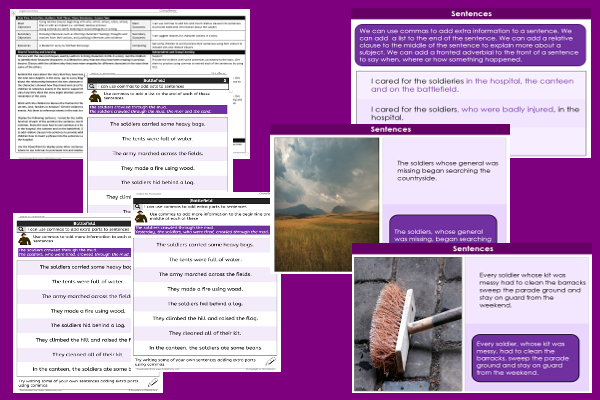Lesson Two – Sentence Commas

This English teaching pack for Key Stage Two gets the children to practise using commas to insert a range of different phrases and vocabulary lists into example sentences related to an adventure story read by the class.
The class can select and explain evidence from reading to support viewpoints about the actions of characters in the narrative to suggest how the plot might develop and conclude.
Download this teaching pack including a lesson plan, classroom activities and an interactive presentation to practise using commas to insert a range of different phrases and vocabulary lists into example sentences related to an adventure story read by the class
Activities in this teaching pack include a differentiated set of worksheets to identify and model how to use commas in sentences related to an adventure story to add lists for support ability levels and insert phrases for core and extension ability levels to describe the actions of the characters.
The interactive presentation gets the children to explore how to use commas to insert different phrases and lists into sentences related to a story read by the class.
This lesson is part of an English scheme of work to get the children to investigate and model how to use narrative structures employed by authors when telling adventure stories, identify and match definitions of words that are commonly confused with each other and practise extending sentences using commas. There are teaching activities for shared learning, differentiated worksheets to support independent learning and interactive presentations to introduce concepts and key skills.
-

Determinant Lists
Explain and model how to make lists of objects used and found in different locations to match the correct determinants of a and an
-

English SPAG Assessment
Assess abilities in composing sentences for fiction and non-fiction using the correct spellings, punctuation marks and grammar vocabulary phrases
-

Maths Arithmetic Assessment
Assess abilities in solving arithmetic number problems for addition, subtraction, multiplication and division when working with informal and formal written calculations
-

Environment
Identify and describe some of the special landscapes and locations that can be found in the world and reflect on how they can be protected and preserved for the future
